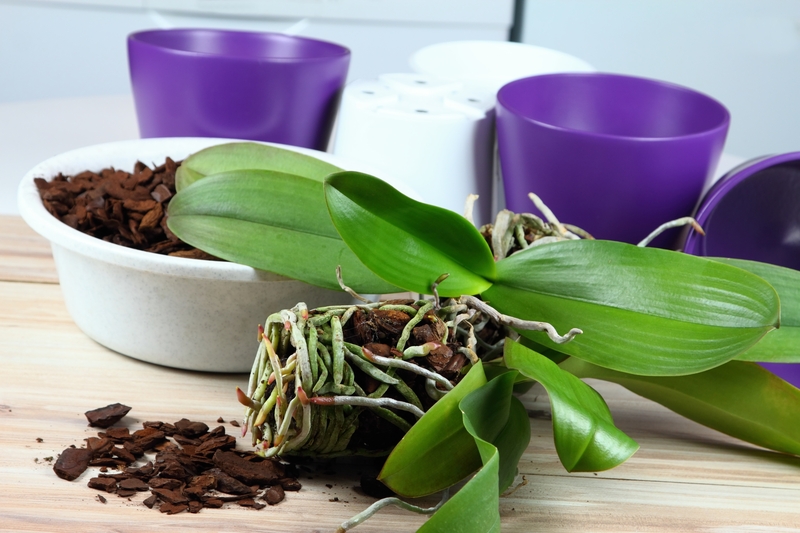Protect your garden investment from severe weather havoc
Posted on 09/09/2025
Protect Your Garden Investment from Severe Weather Havoc
Your garden is a significant investment--not only financially, but also emotionally and environmentally. Unfortunately, severe weather events are becoming increasingly frequent, posing new challenges for gardeners every year. From pounding rain and flooding to intense heat waves, heavy winds, hailstorms, and unexpected frosts, one storm can undermine years of dedication in mere hours.
In this comprehensive guide, we will explore effective strategies to protect your garden investment from severe weather havoc. Whether you're an enthusiastic home gardener or a landscape professional, you'll find actionable, garden-friendly tips for every season. Let's take steps today to safeguard your green haven from nature's unpredictable fury!

Understanding the Threats: How Severe Weather Affects Your Garden
Common Severe Weather Events Impacting Gardens
- Heavy Rain and Flooding: Causes soil erosion, waterlogging, and root rot.
- Strong Winds: Uproots plants, breaks branches, and strips leaves.
- Hailstorms: Bruises foliage, shreds leaves, and destroys produce.
- Frost and Snow: Damages sensitive plants and bursts stems or branches.
- Heatwaves and Drought: Dries soil rapidly, scorches plants, and stunts growth.
Each weather event brings distinct risks. By preparing for all possible scenarios, you significantly increase your chances to protect your gardening investment from weather disasters.
Creating a Resilient Garden Design
Planning for Extreme Weather: The Foundation of Garden Protection
Proper planning is crucial to minimize the impact of severe weather on your garden. Here are essential design principles to shield your landscape:
- Diversify Plantings: Choose a mix of species, including native and hardy varieties, to ensure some plants survive when others fail.
- Native plants are more adapted to local weather extremes.
- Layering plants (tall trees, shrubs, groundcovers) creates structural windbreaks.
- Install Raised Beds: Raised beds improve drainage during heavy rains and allow you to control soil conditions, reducing root rot risks.
- Mulching: A thick layer of organic mulch conserves moisture, moderates soil temperature, prevents erosion, and shields roots from temperature extremes.
- Create Windbreaks and Shelterbelts: Plant dense hedges or install fences/walls to block damaging winds and protect delicate crops.
- Proper Slope and Drainage Planning: Ensure your garden slopes away from structures and that drainage channels direct excess water safely.
- Install Shade Structures: Use pergolas, shade cloths, or strategic tree planting to moderate extreme sun or hail.
The Importance of Soil Health in Weather Protection
- Soil Structure: Amending soil with compost increases its ability to absorb and retain moisture during drought and withstand heavy rains.
- Deep Planting: Encourage deeper root systems by watering deeply and mulching, making plants more resilient to drought and wind.
Emergency Preparedness: Proactive Steps Before a Storm
No garden is completely immune to damages, but being ready can make a significant difference when storms hit. Take these steps to protect your gardening investment from severe weather havoc:
What to Do Before Severe Weather Strikes
- Stay Informed: Track weather forecasts, storm alerts, and temperature swings with reliable apps or local news.
- Secure Structures: Check garden arches, trellises, and greenhouses. Anchor or reinforce them to withstand wind gusts.
- Prune Wisely: Regularly remove weak, dead, or overhanging branches to reduce the chance of breakage during wind, ice, or snow events.
- Protect Vulnerable Plants: Temporarily cover tender plants with frost blankets, burlap, or waterproof sheeting. Use stakes or cages to support heavy-laden branches before wind or hail.
- Move Containers and Hanging Baskets: Relocate potted plants to sheltered positions--inside, against a wall, or under covered patios to protect potted investments from storm damage.
- Harvest Early: If a storm threatens, pick ripe fruits, vegetables, and flowers to save your yields from weather destruction.
- Check for Drainage Blockages: Clear gutters and storm drains to prevent garden flooding.
Emergency Supplies Every Gardener Should Have
- Frost cloths or row covers
- Sandbags for flood-prone areas
- Spare stakes, ties, and plant cages
- Mulch and compost for quick soil interventions
Damage Control: After the Storm Passes
How you react after a severe weather event can make the difference between total loss and a swift recovery. Here are actionable tips to salvage and nurture your investment post-storm:
- Survey the Damage: Walk through your garden and take notes or photographs for insurance if necessary.
- Remove Debris: Clear broken branches, fallen leaves, and foreign objects to prevent diseases and pests.
- Rescue and Prune Damaged Plants: Trim broken stems and branches, but avoid heavy pruning until plants recover. Apply a clean cut to prevent infection.
- Assess Soil Saturation: Do not walk on waterlogged soil, as it compacts the ground and damages roots. Aerate with a garden fork if needed.
- Replant and Reseed: If necessary, replace lost plants or patch bare soil to prevent erosion and weeds.
- Boost Nutrients: Apply a light layer of compost or organic fertilizer to help plants recover from shock.
Watch for Pests and Diseases
Storm-stressed plants are more susceptible to pests and infections. Inspect plants for fungus, mold, or insect infestations in the days and weeks after severe weather.
Protecting Your Garden Investment Throughout the Seasons
Spring and Early Summer: Active Protection
- Install Row Covers: Lightweight fabrics shield seedlings from wind, hail, and cold snaps.
- Mulch Generously: Apply fresh mulch to insulate roots and suppress weeds.
- Stake Tall Perennials Early: Prevent wind damage as growth accelerates.
Mid to Late Summer: Heat and Drought Defense
- Shade Cloth: Suspend over sensitive crops during heatwaves.
- Deep Watering: Less frequent, deep watering encourages resilient roots.
- Monitor for Water Stress: Check soil moisture regularly and watch for wilted leaves.
Autumn: Preparing for Storms and Frost
- Prune Dead or Diseased Limbs: Reduces storm damage risk.
- Clear Fallen Leaves: Prevents fungal diseases.
- Apply Extra Mulch: Protects roots against sudden cold snaps.
Winter: Snow and Ice Management
- Remove Heavy Snow by Hand: Gently shake or brush off to avoid breakage.
- Wrap Trunks and Shrubs: Use burlap for young trees or evergreens against wind and frost.
- Ventilate Greenhouses: Prevent excess humidity and fungal outbreaks.
Smart Investments for Year-Round Garden Protection
Install Efficient Irrigation Systems
A drip irrigation or soaker hose system saves water during droughts and ensures consistent moisture during sudden dry spells. Proper irrigation is a wise move to protect your garden investment from unpredictable weather spells.
Automate and Monitor Your Garden
- Rain Sensors: Prevent overwatering during periods of heavy rain.
- Soil Moisture Monitors: Alert you when your garden needs water or drainage improvement.
- Weather Stations: Provide real-time data to inform protective measures.
Invest in Sturdy Infrastructure
- Choose quality materials for fences, trellises, and raised beds to withstand weather extremes and last longer.
- Anchor greenhouses and tool sheds against strong winds.
Insurance and Documentation: Financial Protection for Your Garden
For high-value gardens and landscapes, consider extending your home insurance to cover landscaping and outdoor structures. Inquire about:
- Specialized policies for rare plants or expensive garden features.
- Coverage for greenhouses, ornamental ponds, or garden statuary.
- Document your garden's growth and investment with regular photos and plant lists.

Expert Tips: Building a Community of Prepared Gardeners
*Join local gardening groups or forums to stay informed about regional weather patterns and share protective strategies. Sometimes a neighbor's experience can save your entire crop!*
Conclusion: Weatherproofing Your Garden is an Ongoing Journey
A beautiful, productive garden requires vigilance and resilience. By thoughtfully designing for climate, making smart investments, monitoring conditions, and acting swiftly before and after storms, you can protect your garden investment from severe weather havoc.
With every step, you not only safeguard your personal oasis but also contribute to a more resilient, greener environment for your community. Start today--because the next storm could be right around the corner, but your garden doesn't have to stand defenseless.

